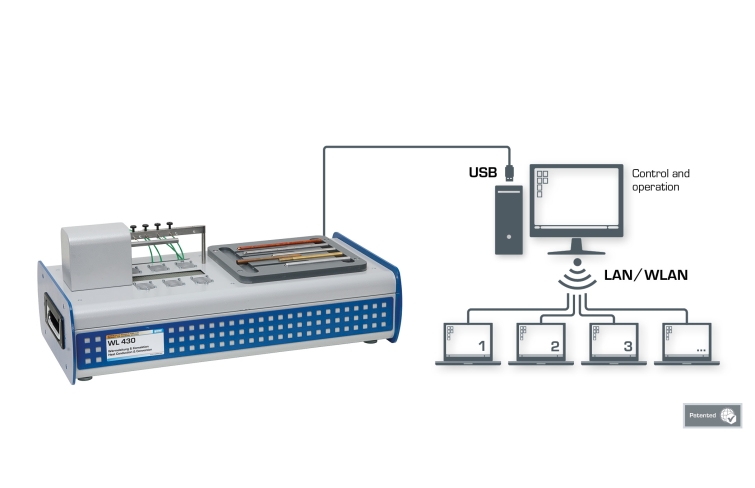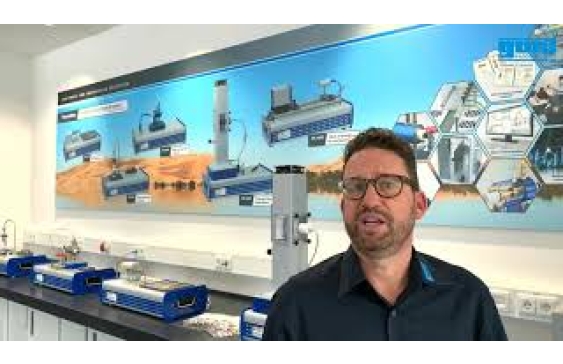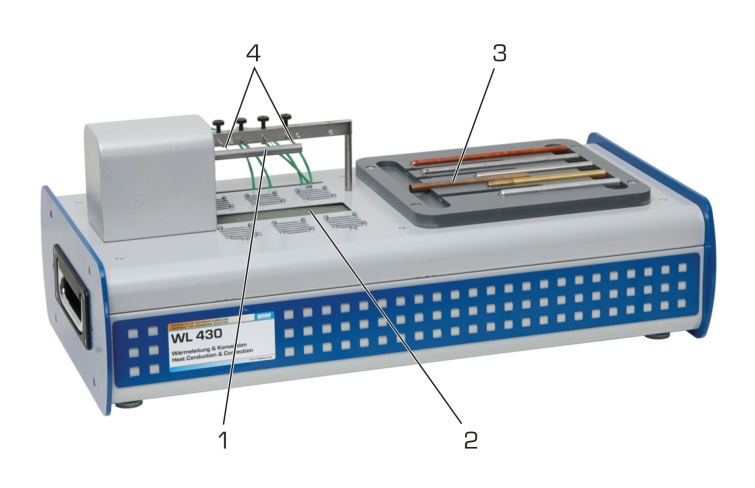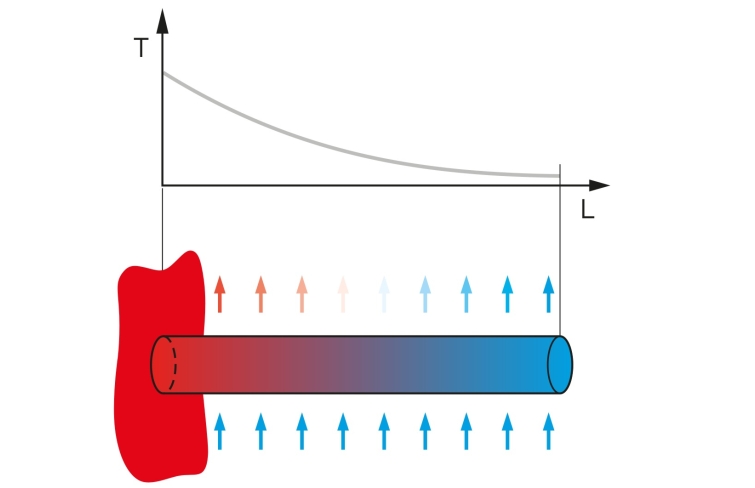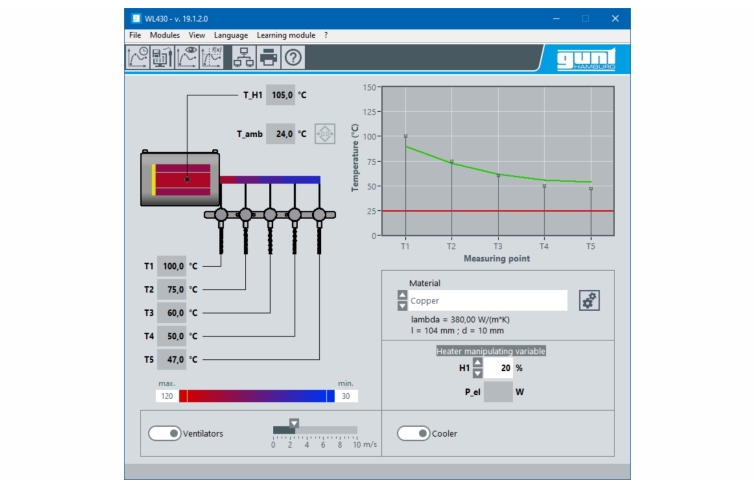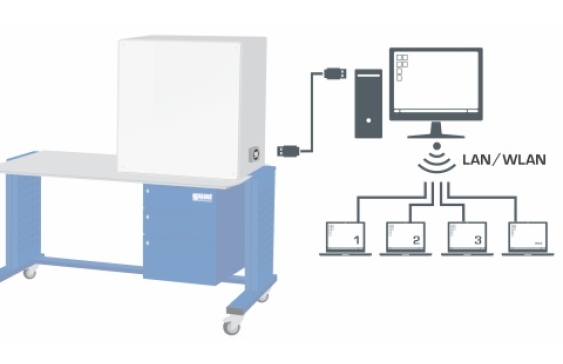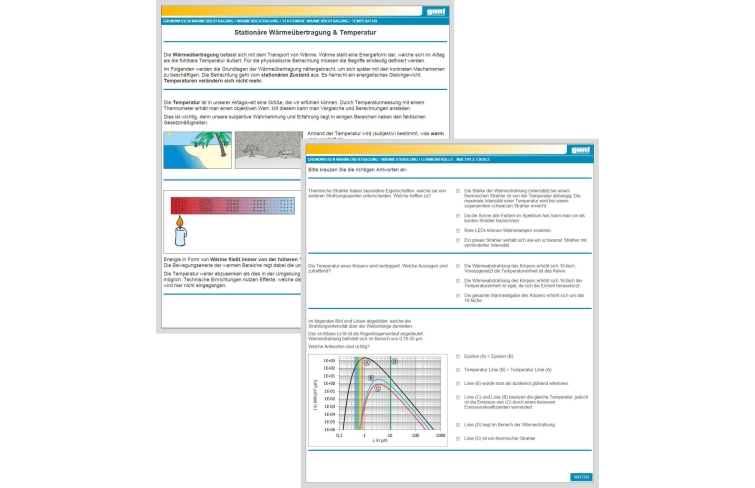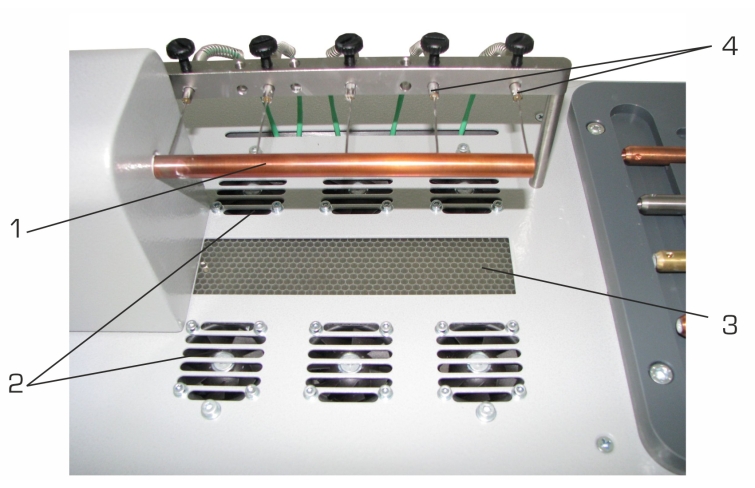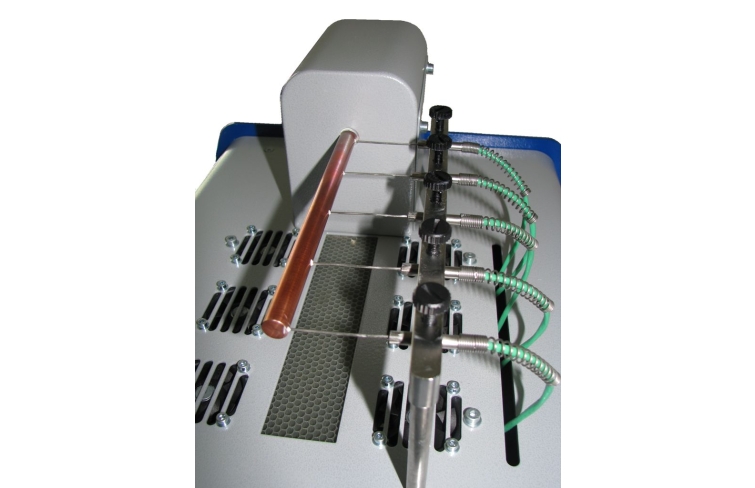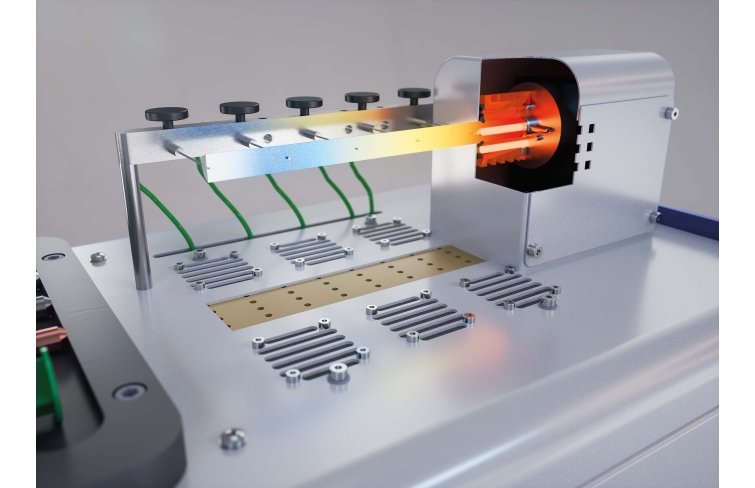Heat conduction and convection are among the three basic forms of heat transfer and often occur together. WL 430 allows basic experiments on both forms of heat transfer: heat conduction and convection. The unit focuses on different metal specimens. The specimens are placed on a heater and are heated on one side. The heat is conducted through the specimen and dissipated to the environment. The specimen used behaves like a cooling fin. In addition there are ventilators below the specimen. The flow rate of the ventilators is continuously adjustable in order to influence the convective heat transfer. The air flow is conveyed evenly around the specimen. Consequently, besides conducting the experiment with still air (free convection), it is also possible to conduct experiments with flowing air (forced convection). The effect of different materials on heat conduction is demonstrated by comparing different specimens.
The experimental unit is equipped with five temperature sensors. Heating power and flow velocity of the air flow are adjusted and displayed via the software.
The microprocessor-based instrumentation is well protected in the housing. The GUNT software consists of a software for system operation and for data acquisition and an educational software. With explanatory texts and illustrations the educational software significantly aids the understanding of the theoretical principles. The operation and control of the experimental unit is carried out via a PC (not included in the scope of delivery) connected via a USB interface. Any number of workstations with the GUNT software can be used for observation and evaluation of the experiments via LAN/WLAN connection using only one licence.



